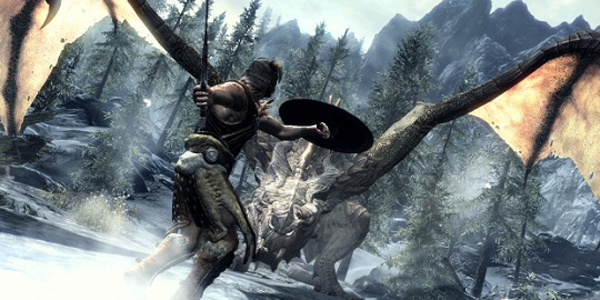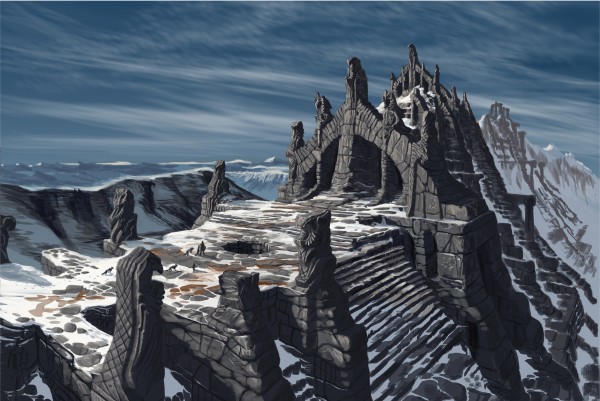Skyrim’s fornaldarsagas (Norse myths) are wet fantasy watercolors.
Dragons circle the icy fortress of Himinbjorg, raining fiery breath on the svelte Nordic swimsuit models below, but the old flying lizards tremble at the liberal brush, extinguishing red hot flames with electric blues. Forgotten, boring Beowulfs fall beneath the merciless (or merciful) swathes of azure and grey. A virtual Ragnarok of thievery, kind deeds, travelling exploits, and serial murder penetrate the landscape from the tip of sable bristles, fusing the existing scene to the painter’s reimagining. Skyrim watches, helpless and intent.
The original artist is dead, the painting forfeit to the devices of a novice painter. The budding artist can’t speak with the canvas, and so must learn its language, word by word. Education begins swiftly: erase this dragon and push that elderly monk; immolate this demon spawn and command a fleet of foxes.
Then comes grammar, learned through tedious grammarians or experience. Secretly poison this beer and secretly poison beer better. Pay the armor troll’s toll and improve fashion sense.
The young artist’s vocabulary and sense of syntax attuned, the oil-based paint flows like acrylic. Dual healing strokes restore the canvas’ character; giants bend and break at the fine-tipped spear of the brush. Eventually, the entire painting is within the artist’s talented scope, and Skyrim unfolds like the jötnar from the armpit of the jötunn Ymir.
Games are paintings, languages, evolving stories by a matter of degrees. The most linear are color-by-number, offering a completed, authored product for directed input. The most emergent supply the implements of creation and a blank template. Skyrim falls towards the more emergent end of the video game spectrum, less confined than Final Fantasy and less open than MineCraft.
The stories (arbitrarily “main” and “auxiliary”), the setting, and the characters (arbitrarily “dragon” and “non-dragon”) cultivate a snowy, Nordic hinterland divided by political and personal strife. These developed elements offer forked roads but do not, it seems, make all the difference.
Stumbling upon a prescribed, unexplained public murder and the subsequent intrigue engages the player’s desire for world discovery. Becoming a gifted conjurer (by intent, accident, or necessity) and saving recluse woodsmen with an army of summoned flame atronachs casts the player as Skyrim’s first Daedric, dragonborn, necromancing do-gooder. The emergent story, the evolution of Skyrim’s player-character, is unique and empowering.
Players sit down to the artfully painted vistas of High Hrothgar, the haunting graveyard fog of Falkreath, and the lusty Argonian whores of Riften, and get busy with their brushes. Between the 100+ hours of developed content and the vast, wild tundra, players can assemble original character combinations of Thu’ums, war axes, head straps, and seared salmon to realize an emergent fantasy self. Skyrim is a vicarious peak for expanding player freedom in an imaginative, full landscape; it requires only an ability to learn, the drive to create, and at least two full days of time.




















It is a tragedy that I have yet to play this game.